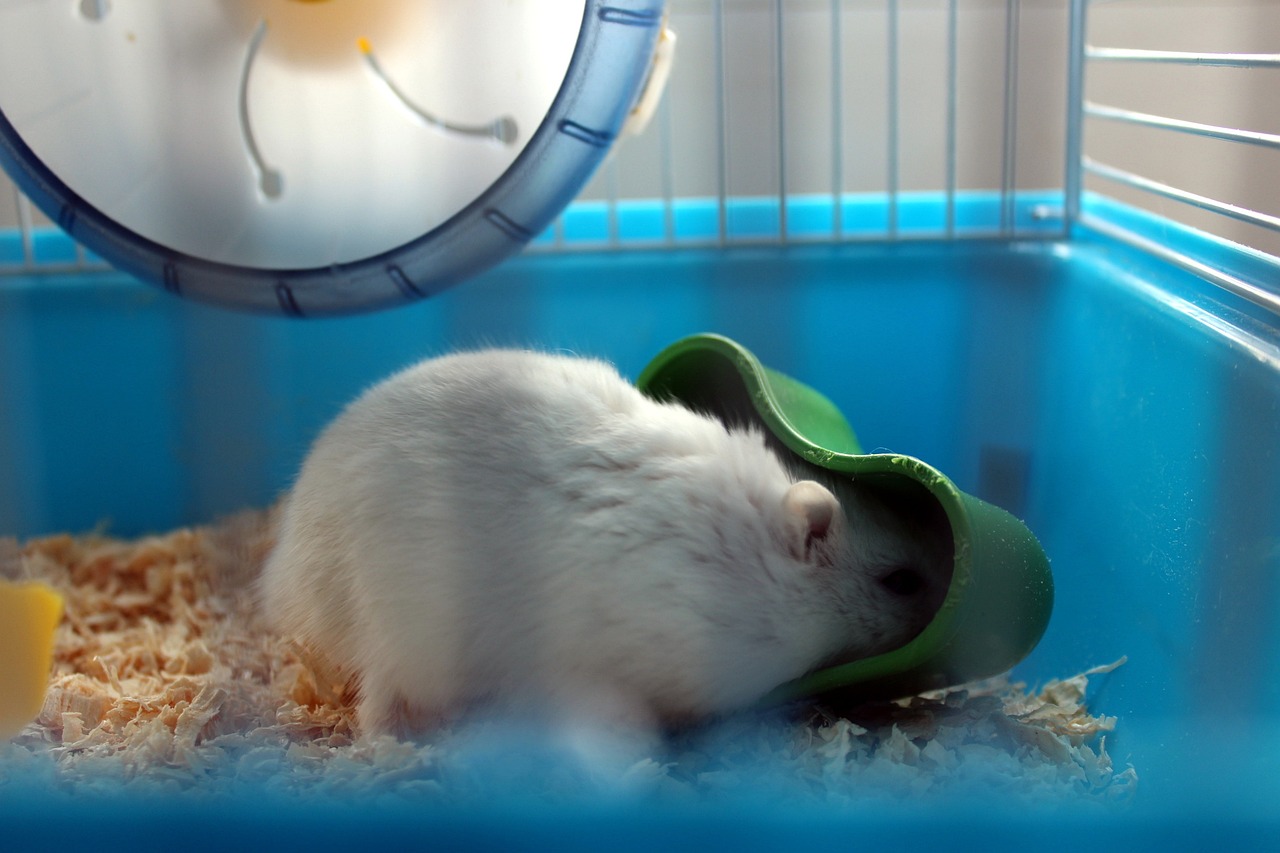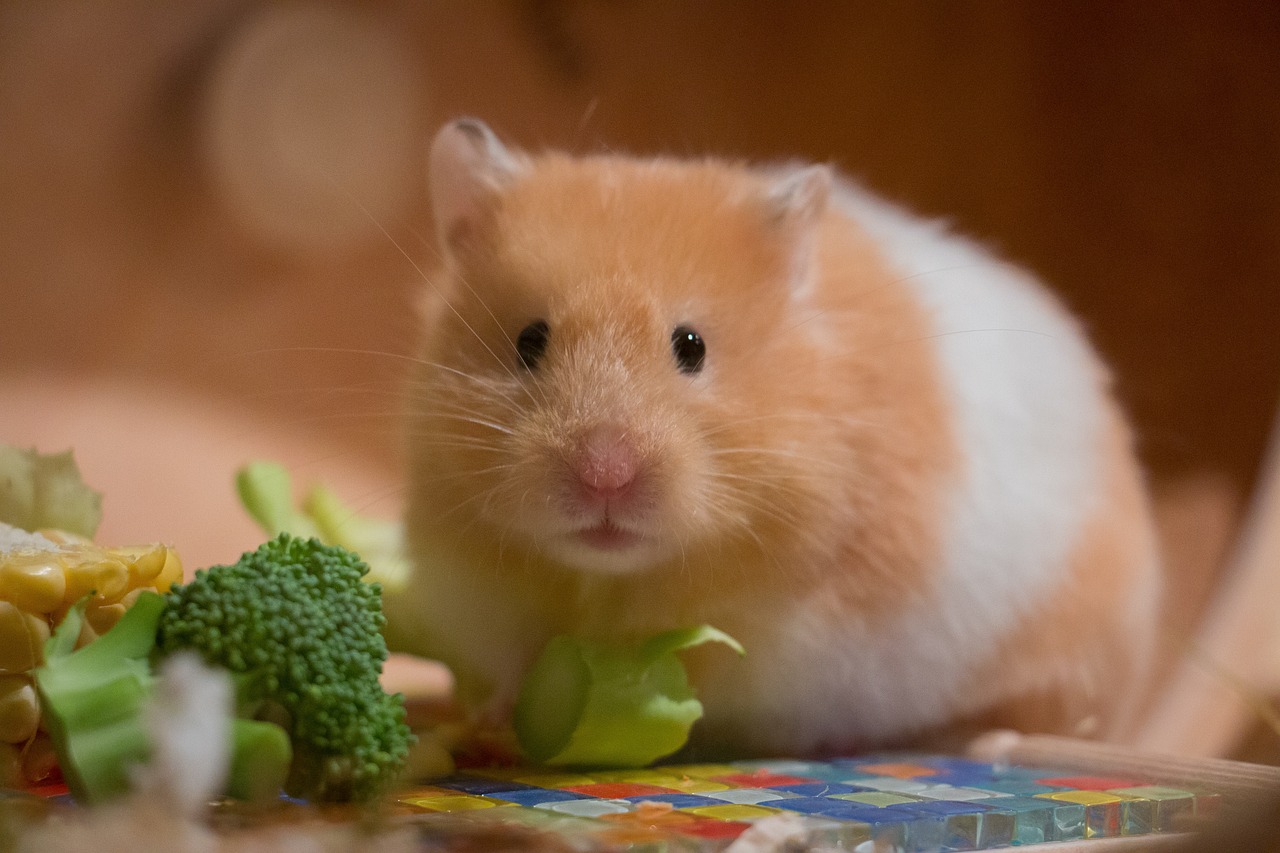How to keep hamsters indoors and what to look out for

Why Hamsters Make Great Indoor Pets
Hamsters are beloved for their small size, relative ease of care, and adorable behaviors, making them ideal as indoor pets, especially for people with limited space. Their quiet nature and nocturnal habits also mean they are less disruptive during daytime hours, making them perfect companions for those who work from home or have day commitments.
Goals of This Article
This guide is designed to help new hamster owners understand the essentials of creating a suitable indoor environment for their new pet. It will cover everything from choosing the right hamster breed to setting up a habitat that ensures their health and happiness, along with key care tips to maintain a thriving companion.
Chapter 1: Choosing the Right Hamster
Factors in Choosing a Hamster
Choosing the right hamster involves understanding the different breeds and their unique needs. For example, Syrian hamsters are larger and need more space, while Dwarf varieties might be more sociable but require careful handling due to their smaller size. Each breed has distinct dietary needs, temperament, and exercise requirements which potential owners need to consider.
Where to Obtain a Hamster
Prospective owners can adopt a hamster from local rescue centers, purchase from reputable breeders, or select one from a pet store. It’s crucial to choose a healthy hamster, characterized by clear eyes, active disposition, and a clean coat. Advice from experienced breeders or staff at rescue centers can also help in making a well-informed decision.
Chapter 2: Setting Up Your Hamster’s Home
Selecting the Right Cage
The size and type of cage are critical to your hamster’s wellbeing. A minimum cage size of 24 inches by 12 inches is recommended, though larger is better, especially for Syrian hamsters. Cage types include wire cages, which provide good ventilation, and aquarium-type cages, which protect against drafts and are escape-proof.
Essential Accessories
Essential items for the cage include:
- Bedding: Aspen shavings or paper-based products are best as they are absorbent and safe for hamsters.
- Water Bottles: A leak-proof water bottle is essential to keep the bedding dry and provide constant access to water.
- Food Dishes: Stable, heavy dishes that cannot be tipped over easily.
- Hideouts and Toys: Provide tunnels, hideaways, and chew toys to help with teeth maintenance and mental stimulation.
Creating a Safe Environment
To hamster-proof your home, ensure that the cage is placed in a quiet area away from direct sunlight, drafts, and loud noises. Check that all small openings and gaps are secured to prevent escape, and remove any toxic plants or harmful substances that the hamster could access during out-of-cage time.
By adhering to these guidelines, new hamster owners will be well-equipped to create a safe and nurturing environment for their indoor pets, ensuring their health and longevity.
Chapter 3: Nutrition and Feeding
Basic Dietary Needs
- What to Feed Your Hamster: A balanced diet for hamsters includes commercially available hamster pellets, which are formulated to meet all their nutritional needs. In addition to pellets, you can offer small amounts of seeds, fresh fruits, and vegetables to provide variety and additional nutrients.
- Safe Fresh Foods: Suitable fruits and vegetables include apples (without seeds), carrots, broccoli, and cucumbers. Always introduce new foods gradually to avoid digestive upset.
Feeding Schedule
- How Often and How Much to Feed: Feed adult hamsters once daily, preferably in the evening when they are most active. Provide a small scoop of pellets (about a tablespoon) and supplement with a variety of fresh foods several times a week in tiny amounts.
Foods to Avoid
- Harmful Foods: Some commonly available foods can be dangerous to hamsters. Avoid onion, garlic, citrus fruits, chocolate, and any sugary or high-fat treats. Also, ensure that all seeds and pips (e.g., apple seeds) are removed as they can be toxic.
Chapter 4: Daily and Weekly Care Routines
Cleaning the Cage
- Routine Maintenance: Remove soiled bedding and leftover food daily. Conduct a thorough cleaning of the entire cage once a week by replacing all bedding and cleaning the cage with a pet-safe disinfectant.
- Step-by-Step Cleaning Instructions: Start by removing your hamster to a safe enclosure. Remove all accessories and scrub them clean. Wipe down the interior surfaces of the cage, rinse thoroughly, and dry before adding fresh bedding.
Health Monitoring
- Regular Checks: Observe your hamster daily for signs of activity and health. Look for bright eyes, a clean coat, and normal eating habits.
- Signs of Illness: Be alert for symptoms like lethargy, unexplained weight loss, wetness around the tail (wet tail), or breathing difficulties, all of which warrant a visit to the veterinarian.
Exercise and Play
- Importance of Physical Activity: Ensure your hamster has a wheel for nightly exercise and various toys for mental stimulation. Consider providing a secure play area outside the cage where your hamster can explore under supervision.
Chapter 5: Handling and Interaction
Taming Your Hamster
- Building Trust: Start by spending time near your hamster’s cage and offering treats from your hand. Gradually progress to gently petting your hamster and then holding it in your hands.
- Handling Techniques: Support your hamster with both hands when picking it up, never lift by the tail. Ensure handling sessions are short and frequent to build confidence and trust without causing stress.
Understanding Hamster Behavior
- Normal vs. Stressful Behaviors: Normal behaviors include exploring, foraging, and grooming. Signs of stress or illness may include hiding excessively, aggression, or changes in eating and sleeping habits.
- Behavioral Insights: Understanding these behaviors can help you provide a safer, happier environment for your pet and identify any issues early.
These chapters offer practical advice to ensure your hamster is healthy, happy, and well-adjusted to its indoor environment, promoting a long and enriching relationship with your pet.
Chapter 6: Common Health Issues and Preventive Care
Identifying Health Problems
- Symptoms of Common Diseases: Hamsters can suffer from a variety of health issues including respiratory infections, diarrhea (often referred to as “wet tail”), and tumors. Key symptoms to watch for include sneezing, wheezing, lethargy, sudden weight change, and changes in eating or drinking habits.
- Monitoring Health: Regular monitoring can help catch issues early. Weekly health checks should include examining your hamster’s eyes, ears, mouth, and skin for any signs of disease or distress.
When to See a Vet
- Guidelines for Vet Visits: Immediate veterinary consultation is recommended if your hamster shows any signs of distress or unusual behavior, such as prolonged lethargy, refusal to eat, difficulty breathing, or uncharacteristic aggression.
- Emergency Situations: Know the location and contact information of your nearest vet that treats small animals and consider registering your hamster with them upon adoption.
Preventive Measures
- Vaccinations and Routine Care: While hamsters do not require vaccinations like dogs or cats, regular health checks by a vet can help prevent or catch early signs of health issues.
- Parasite Control: Discuss with your vet about routine checks for parasites, especially if your hamster has unexpected weight loss or appears itchy.
Chapter 7: Legal and Ethical Considerations
Legal Requirements
- Understanding Local Laws: Research local laws regarding pet ownership, which can vary widely. Some regions may have specific requirements or restrictions regarding the breeding, sale, and treatment of pets.
- Registration and Compliance: In some places, you might need to register your pet with local authorities, so it’s important to comply with all legal requirements to ensure the welfare of your hamster.
Ethical Considerations
- Responsible Ownership: Ethical considerations include providing a safe, clean, and enriching environment for your hamster, ensuring they have proper nutrition, social interaction, and medical care.
- Considering Hamster’s Needs: It’s crucial to consider whether you can meet the long-term needs of a hamster, including space, financial costs, and time for daily care and interaction.
Conclusion
Recap of Key Points
- We’ve covered essential aspects of hamster care including choosing the right breed, setting up a proper habitat, understanding nutrition, daily care routines, health issues, and the legal and ethical responsibilities of owning a hamster.
Encouragement for Continuous Learning
- Owning a hamster is a continuous learning process. Engage with online forums, local pet owner groups, and professionals like veterinarians to gain more knowledge and support. Staying informed and proactive about your hamster’s health and happiness will ensure a rewarding experience for both you and your pet.
This guide provides the foundational knowledge needed to begin the journey of hamster ownership, emphasizing that thorough preparation and understanding are key to successful pet care.






